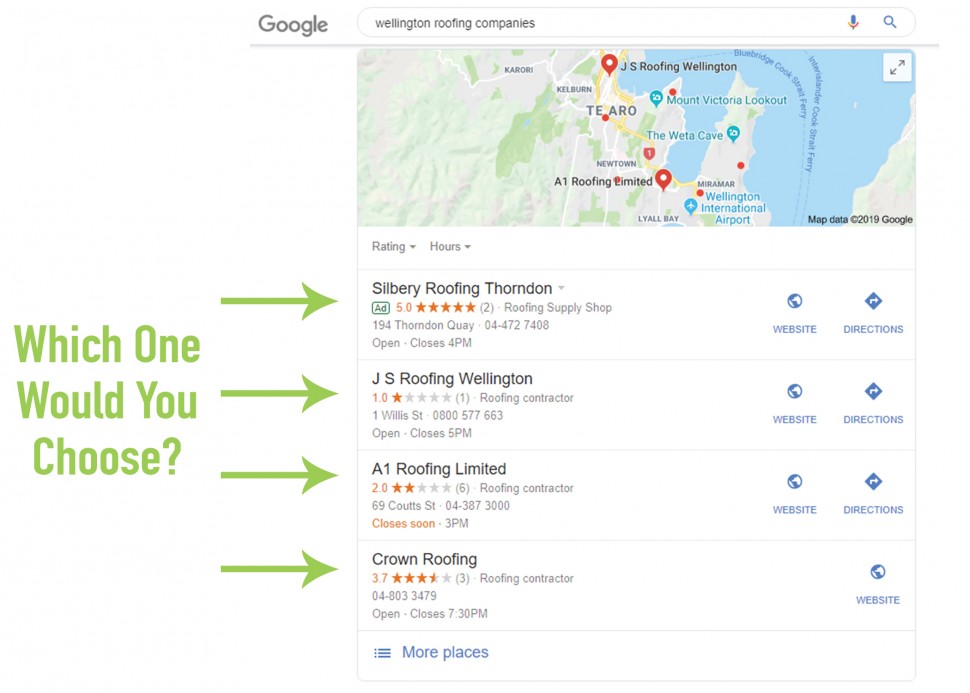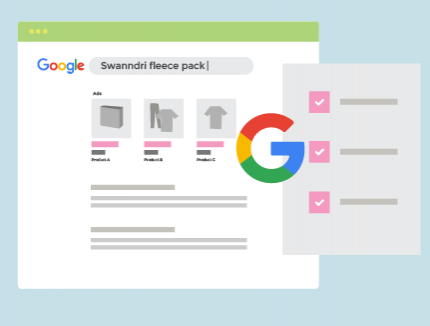BLOG
Online Reputation Management
Online Reputation Management for Business
— It’s a conversation with your customers… are you listening?
Our lives are becoming increasingly digital and the internet is the first place we turn when considering a purchase. It’s also the first place we go to vent when we feel a vendor has provided a shoddy service or sold us an inferior product. These two digital actions combine to make ‘online reputation management’ a very real threat to revenue for modern companies of all shapes and sizes.
Read on as we identify online reputation management as a conversation between customers and merchants. We’ll give you insights into how you can utilise it to start your own customer-merchant conversations, create brand buzz and grow your business.
What is online reputation management?
Put plainly, online reputation management (ORM) is just that — managing your reputation, online. This pertains mostly to reviews that your existing customers have left regarding your product or services, and the management thereof. Taking a step back and a more holistic view, however, your ORM is an excellent measure of how well you engage with your users (existing and potential customers), online.
If there are reviews of your business online, but you have little to no engagement with them, it’s fair to say your ORM and subsequent online reputation is very poor in the eyes of your all-important users (especially the ones who are using your reviews to inform their buying decision).
How can a company’s online reputation affect their bottom line?
It used to be that a business’s marketing platform was their shop window display and their reputation hinged on their finished service or the quality of their product in a customer’s hand. This is still true in part, but today, online reviews mean that a prospective customer can decide you have a terrible reputation and decide not to buy from you long before they see your shop window, product or completed service. The way in which a company is talked about and consequently perceived online can now make or break their entire reputation.
If a business has visibly poor review and trust ratings online, this can directly influence an internet user’s choice to potentially avoid using their services or buying products. A resulting decline in points of contact and purchases made online can see a drop in revenue and a direct impact on a company’s bottom line.

How online reviews are replacing offline word of mouth (the good news)
The great news in all this is that the advent of the internet and online reviews means that online feedback is absolutely visible to you, allowing you to engage with it, tending to any aggrieved parties, and showing prospective customers that you indeed care about customer experience.
Gone are the days when a business's reputation coulr be made or destroyed offline solely through word of mouth. Historically, word of mouth has been devastating for company reputation because more often than not the ill feelings never made it back to the company. Instead the owner would be left wondering why the phone had stopped ringing.
5 ways to manage your online reputation
Put simply, in modern times we should forget the ‘online’ bit — your business’s online reputation IS your business’s reputation. As such, managing it should be made a high priority — your customers are your number one asset and what they think of you is everything.
Here are five ways to engage with your customers online to ensure your reputation is, well… reputable.
1. Get started by cultivating an online reputation
Make yourself visible and available for online review by having a Google My Business (GMB) listing and a Facebook business page. Encourage existing customers to review your products/services by sending them an invitation link to do so in a (potentially automated) post-sale email — here is the Limelight Online ‘invitation for review’ link: bit.ly/Review-Limelight-Online . Create a buzz about your brand and help your user engagement grow.
2. Monitor what people are saying about you online
As mentioned above, online feedback isn’t a neighbour-to-neighbour rant over a fence on a Sunday morning. You don’t need a clairvoyant’s ball to tap into it — instead it’s right there on your screen.
That said, it won’t knock on your door and present itself, you need to be monitoring the online channels you use to promote yourself. Check your GMB listing and Facebook business page for new reviews on the daily to see what people are saying about you.
With the ability to set up automatic notifications, automated emails and ORM tools to let you know when you’ve received a new review, there really is no excuse for not knowing someone’s talking about you online.
3. Respond to every review
If a valued customer takes the time to review your business, you should in turn take the time to acknowledge their efforts and the fact that they are indeed a valued customer.
In the case of positive comments, your reply can be as succinct as a smiley emoticon or a ‘Thanks, Valued_Customer_001. Great to hear your feedback!’. They will appreciate it and would-be customers will see that you engage with your clientele like you care.
4. Learn how to deal with negative reviews
This is the absolute crux of online reputation management. If you receive a negative review you must address it readily in a democratic and accountable fashion.
- Show empathy by firstly acknowledging the user’s bad experience — ‘Sorry to hear you didn’t enjoy your @The Spice of Life dining experience, @Valued_Customer_001’.
- Then speak to whatever it was they weren’t happy with — ‘That’s unfortunate you found your chicken Madras too spicy’.
- And finish by asking what you can do to improve or by presenting a resolution that the customer can act upon, encouraging their return business — ‘We list our chicken Madras dish as having a spice rating of five chillies, which is the reserve of seasoned spice specialists. However, our chefs would love to see you visit @The Spice of Life again so we can prepare you a chicken Madras that’s better tailored to your preferred spice level’.
They may take you up on your offer, they may not… but everyone reading your response will appreciate that you take care to make things right with your customers — a very positive trait in business.
5. Don’t let bad reviews linger like a bad smell
If you ignore negative reviews like the one responded to above, they can hang around and impact your online reputation for years to come. A client of our parent company, Apex Digital, received a long and ranting negative review some years ago. Unfortunately, they tried to resolve the issue offline, instead of responding to the poor review online where everyone could see the attempt to appease the affronted individual.
We all love reading a negative comment for the ‘shock’ value (“WHAT is this guy ON…?”), which means that negative comments often receive more engagement and can be deemed by social media algorithms to be more ‘Most helpful’ than other middle of the road reviews that aren’t so saucy.
If you don’t have a large volume of new reviews coming through regularly, this can mean the unaddressed negative comment hangs around at the top of the review section on your Facebook or GMB page for a seriously long time.
Can Facebook remove negative reviews?
The aforementioned Apex Digital client in question came to us regarding their lingering negative review last year, asking us if we could request that Facebook take it down. They said they’d done everything they could to resolve the issue offline, that the customer wasn’t compliant in any way and that eight years on from the review being posted, it was still sitting at or near the top of their review section in the default ‘Most Helpful’ sort order.
We informed them that Facebook’s policy around removal of reviews is very strict and exists to serve the removal of ‘inappropriate’ content rather than unwanted negative reviews. The social giant will only remove written reviews if they include spam or hate speech in line with their Community Standards.
If you feel you have indeed received a review that breaches these standards, it’s up to you to report the review to Facebook by clicking the three dots in the right corner of the review, clicking ‘Report Post’ and following the on-screen instructions.
How did they make the negative review less visible?
While damning to our client’s online reputation, their negative review didn’t breach Facebook’s community standards in any way. We advised them Facebook wouldn’t remove the review and that they should instead turn their efforts to encouraging newer customers to leave reviews, with the objective of flushing out the damaging comment with more current and hopefully positive reviews.
As Facebook users engage with these newer reviews by Liking and Commenting on them, they are effectively voting them up the ‘Most Helpful’ sort order, stealing attention from the negative review in question, sending it down the ‘Most Helpful’ sort order and out of immediate view.
Online Reputation Management Tools
ORM is taken so seriously by many businesses that they employ purpose-built ORM tools to streamline and automate the ongoing task. These tools are effectively listening tools that track mentions of your brand across the web and all the major social networks in real-time, so you can monitor reviews/comments and reply to them right there in the .
Some notables FREE Online Reputation Management tools you could try yourself include:
GoFish Digital Complaint Search
And some PAID Online Reputation Management tools:
3 Key ORM Takeaways
- NEVER ignore negative reviews. If a disgruntled customer were to make a complaint in person at a customer service desk in a bricks and mortar store, the attendant wouldn’t stare over their shoulder and pretend they don’t exist, so why would you ever do this online? The potentially colossal consequences of ignoring bad reviews make it simply not worth the risk.
- Encourage reviews emphatically. Human nature says that we’re much more likely to leave a review if we’ve had a bad experience with a company than an average or positive one. This means we have to work that much harder to garner reviews from customers in the latter two camps. The positive brand buzz generated when good reviews begin to stack up is well worth the effort.
- Your online reputation IS your reputation, full stop. If your company has a presence on the web, then you need to own it — think Harrods shop front window levels of ownership. Consider your ORM a feather in your customer service cap and approach it as the best opportunity you’ll ever have to engage with online users’ (highly visible) opinions.
If you’re curious to learn more about ORM or think you could do with some direct guidance in dealing with yours, please reach out to the Limelight Online crew — we’d love to help you nail this important aspect of your digital marketing.









